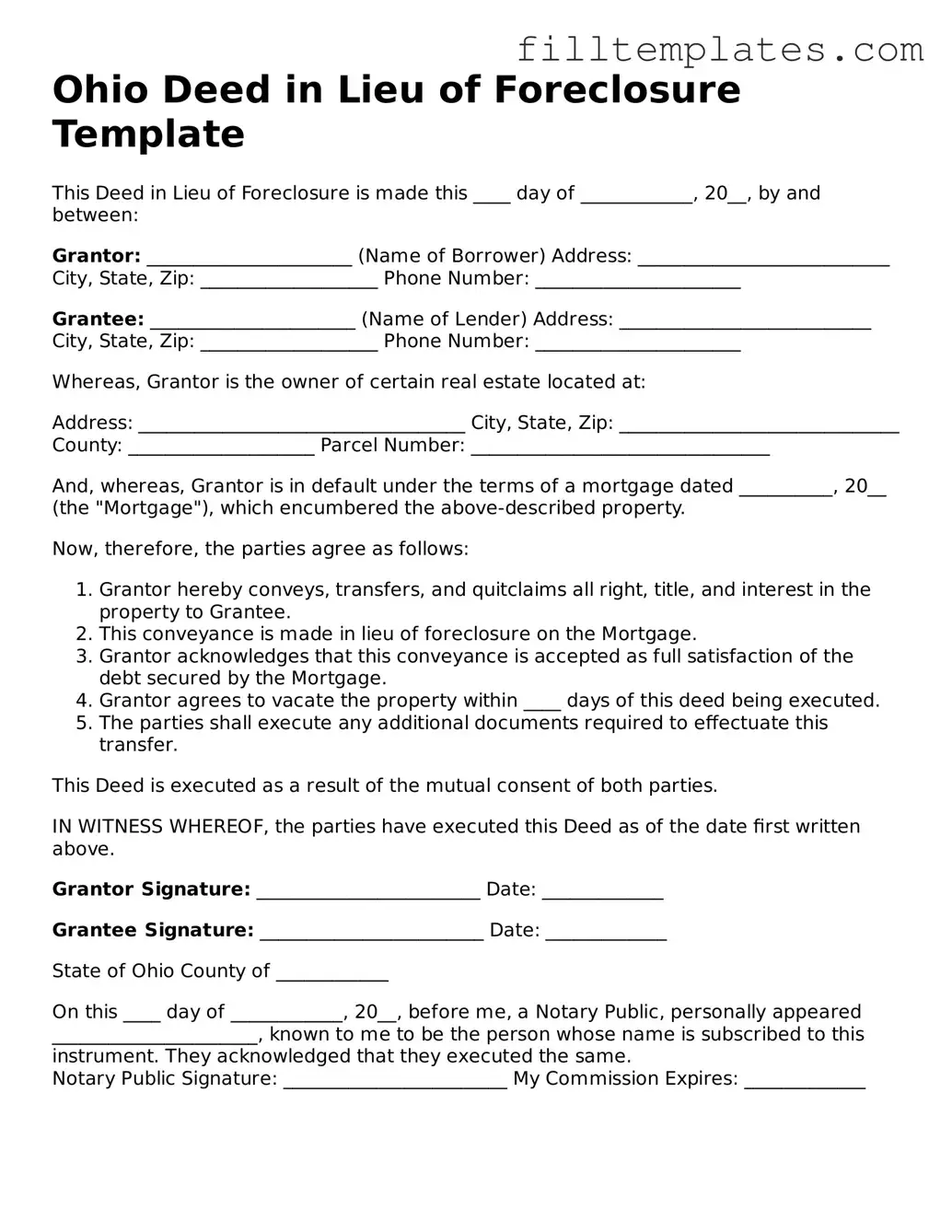Ohio Deed in Lieu of Foreclosure Template
This Deed in Lieu of Foreclosure is made this ____ day of ____________, 20__, by and between:
Grantor: ______________________ (Name of Borrower)
Address: ___________________________
City, State, Zip: ___________________
Phone Number: ______________________
Grantee: ______________________ (Name of Lender)
Address: ___________________________
City, State, Zip: ___________________
Phone Number: ______________________
Whereas, Grantor is the owner of certain real estate located at:
Address: ___________________________________
City, State, Zip: ______________________________
County: ____________________
Parcel Number: ________________________________
And, whereas, Grantor is in default under the terms of a mortgage dated __________, 20__ (the "Mortgage"), which encumbered the above-described property.
Now, therefore, the parties agree as follows:
- Grantor hereby conveys, transfers, and quitclaims all right, title, and interest in the property to Grantee.
- This conveyance is made in lieu of foreclosure on the Mortgage.
- Grantor acknowledges that this conveyance is accepted as full satisfaction of the debt secured by the Mortgage.
- Grantor agrees to vacate the property within ____ days of this deed being executed.
- The parties shall execute any additional documents required to effectuate this transfer.
This Deed is executed as a result of the mutual consent of both parties.
IN WITNESS WHEREOF, the parties have executed this Deed as of the date first written above.
Grantor Signature: ________________________
Date: _____________
Grantee Signature: ________________________
Date: _____________
State of Ohio
County of ____________
On this ____ day of ____________, 20__, before me, a Notary Public, personally appeared ______________________, known to me to be the person whose name is subscribed to this instrument. They acknowledged that they executed the same.
Notary Public Signature: ________________________
My Commission Expires: _____________
